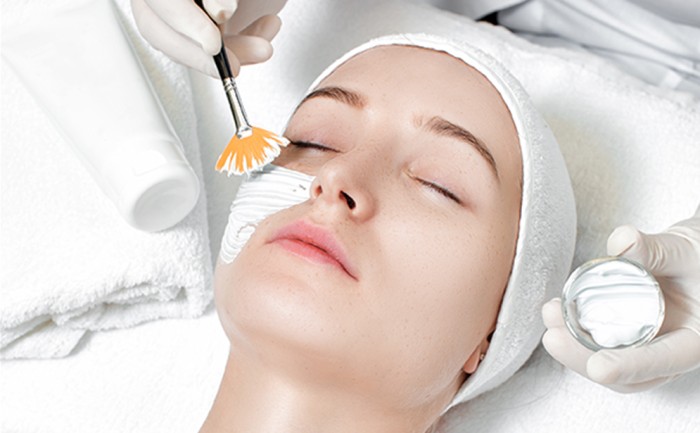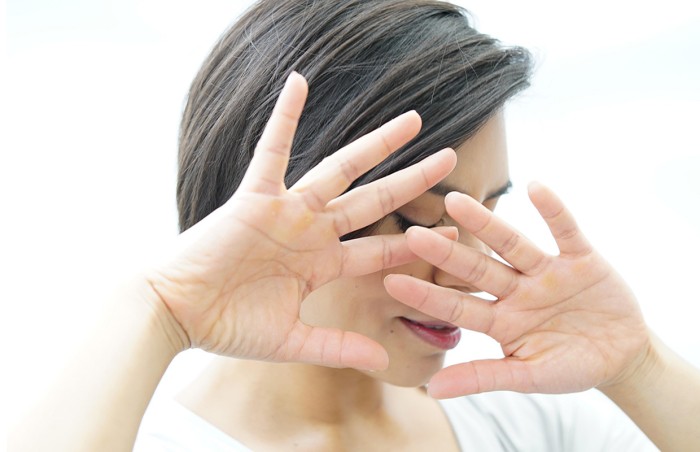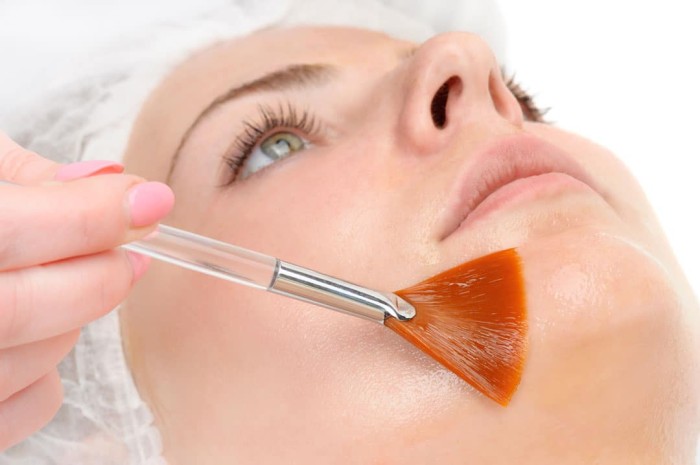Have you ever had a facial exfoliation or peel? There are several types of treatment and each is suitable for a skin type . Find out how to take advantage of this technique to make your skin more beautiful.
Index
What is a Facial Peeling?
The facial peel is a cosmetic treatment done by dermatologists with acids and other specialized creams . During the process, the superficial, middle or deep layer of the skin is destroyed, depending on the case, thus eliminating dead cells and giving rise to a new, healthier and more beautiful skin, with fewer wrinkles, blemishes, acne and other blemishes.
In principle, a layer is removed that is subsequently regenerated and receives a new appearance through the cells that remain in certain points of the skin. The superficial peeling of the outer active layer stimulates cell renewal through profound changes in the architecture of the cells, such as:
- Increased epidermal thickness
- Decrease in the amount of melanin deposited
- Increased production of collagen fibers and blood supply
- Increase in the permeability of the skin, favoring the penetration of the active principles that support the post-peeling treatment.
The depth of the facial peel
As a first step, professionals analyze the patient’s skin , then decide the type of acid and the intensity of the process. Depending on the type of skin and the objectives to be achieved by the patient, the professional can perform the peeling within the following criteria:
- Superficial facial peeling: suitable for blemishes on the surface, enlarged pores and freckles, as well as for dull, dry or tired skin.
- Medium facial peel: ideal for deep blemishes, acne scars , fine wrinkles and sun-aged skin.
- Deep Facial Peel – Perfect for very aging skin with deep blemishes, wrinkles or acne scars.
As you can see, depending on the different characteristics of the skin and the needs of each one, the dermatologist may recommend one or another type of peeling . As you will be able to determine, the first one is the softest process, while the last one will be the most invasive, although as long as they are carried out by experts, it will be a safe and controlled technique.
This technique should not be performed very often, moreover, it is recommended with a frequency of 2 to 4 weeks if it is superficial, 6 to 8 months if it is medium and 12 to 24 months if it is deep, so everything That time we must take proper care of the skin, which we will see a little further down.
Types of facial peel
The peeling can be of three types:
- Chemical: through the use of chemicals
- Mechanical: with homemade recipes , microdermabrasion machines or diamond-tipped sandpaper.
- Physical: with laser, so that it will reduce the thickness of the dermis and make it thinner just where there are marks or other imperfections.
From the writing we are going to talk to you today only about chemical peeling, since otherwise the article can be very long and heavy, we prefer that the concepts of this type of peel are clear before continuing with the other types.
Mechanical peeling or microdermabrasion
It is clear that we have heard this process countless times, since it is one of the fastest and easiest techniques to carry out, it is an exfoliation process using diamond-tipped or crystal-based devices that will affect our dermis in a that will eliminate dead cells and give rise to a much more beautiful and radiant dermis.
If you want more information about this process, I recommend that you take a look at this post: Facial Microdermabrasion: Risks, Benefits and Frequency.
physical peeling
This process usually ranges from the use of scrubs or creams with exfoliating particles to superficially affect the dermis, to the use of lasers that will affect the dermis more deeply and achieve much more notable changes.
Creams can be bought at any cosmetic store or even made at home with effective ingredients (we’ll talk about some interesting recipes below), while lasers should always be performed by a skin professional to avoid unnecessary damage and ensure effective results.
Chemical peel

To achieve a chemical exfoliation, the skin must be previously prepared 15 to 30 days before, by using a prepeeling cream prescribed by your dermatologist. Preparing the skin allows for better results and helps to avoid the possible undesirable effects of peels such as hyperpigmentation or burns that can occur even when all precautions are taken.
Chemical peels use substances that cause the shedding of the superficial layers of the skin, allowing the stimulus for cell renewal and the formation of collagen, thus generating a smooth, shiny and uniform skin . Its purpose is to rejuvenate the skin, improving its texture and color, smoothing wrinkles. The greater the depth of the facial peel, the greater the risk of complications. It must be done under medical supervision.
Some types of chemical peels are:
Retinoic acid peel
The retinoic acid peel remains one of the main weapons in the fight against stretch marks . It promotes a superficial and constant peeling of the skin, renewing and favoring the formation of collagen, which leads to a significant improvement in the appearance of stretch marks.
Glycolic acid peel
The glycolic acid peel is generally used to treat the face, neck, and hands . Glycolic acid is carefully applied to the skin, leaving wrinkles smoother and less visible after treatment. The glycolic acid peels are excellent not only for treatment of the harmful effects of the sun – as the early appearance of wrinkles and blemishes on the skin – but also for the treatment of acne and skin knurled.
Phenol peel
The phenol peel is capable of promoting intense facial rejuvenation in a 30-minute procedure. Eliminates wrinkles and deep expression marks at the same time , restoring the youthful appearance of the patient. Since it provides the best facial rejuvenation results, the phenol peel is indicated only for the most severe cases of skin aging.
Resorcinol peel
The resorcinol peel is indicated for the treatment of acne , dyschromia, rough skin and post-inflammatory hyperpigmentation . It is best suited for darker skin prone to hyperpigmentation.
Salicylic Acid Peeling
In the salicylic acid peel, a 35% alcoholic solution is used for 5 minutes, followed by neutralization with water and is suitable for whitening the skin, reducing wrinkles and treating comedones . The process of this peeling can last for about 10 days and can be repeated every 2 to 4 weeks.
Care after facial peeling

You should hydrate the skin for a week after peeling, with a moisturizer recommended by your doctor. This product will also help you in the regeneration of the skin. You can use thermal water at will, whose main function is to soften the skin. You should not resume using the acid after seven days as the skin will still be regenerating. Wash your face with a mild soap for the first week after the procedure. We leave you some tips and Products to Wash the Face and it is PERFECT.
Do not forget the sunscreen with at least factor 30 , which protects against UVA and UVB , driving him to have to apply at least every four hours. The Physical sunscreens are the best choices because their compounds react chemically less skin compared to chemical sunscreens, which reduces the possibilities of irritation. Prefers hypoallergenic makeup , less likely to generate irritation on sensitized skin.
Necessary care:
- Place cold compresses of chamomile infusion on the peeling area,
- Get a weekly professional hydration, which will help remove residual skin, reduce edema and facilitate re-epithelialization.
- Use moisturizers with sun protection every day , applying them several times.
- Avoid exposing yourself to sunlight or fluorescent light and sudden changes in temperature.
- Use gels or creams with glycolic acid in concentrations of 8 to 15% daily, sometimes combined with lighteners (such as phytic acid and hydroquinone) in areas with residual spots, scars or wrinkles.
- You may need to touch up residual scars or blemishes with a localized facial peel or by prescribing other exfoliating agents for topical use.
After the normalization of the skin, you will have to establish a preventive treatment and daily maintenance.
Can you do a peeling at home?
Although the deeper peels are medical procedures and should only be done in specialized centers and under professional supervision, there are several types of superficial peels that you can do at home and that provide very good results.
They are called exfoliants, which you can buy prepared in stores or make at home, for effects ranging from skin whitening, opening pores, improving acne and oily skin, to reducing superficial wrinkles.
The important thing is that you strictly follow all the instructions and never apply it more than three times a week . Today I bring you three suggestions for peelings that you can prepare at home:
Recipe 1: Facial peeling for skin with wrinkles
While sugar renews skin cells, extra virgin olive oil penetrates deep, nourishes and regenerates the deepest layers. This peeling is capable of smoothing fine wrinkles that appear with age and its frequency is approximately every two days. In addition , it can also be used on the hands.
Ingredients
- A tablespoon of sugar .
- One tablespoon of extra virgin olive oil
Preparation and application steps
- In a small bowl, mix a tablespoon of sugar with a tablespoon of olive oil until you have a smooth paste .
- Before bathing, apply the mixture to damp skin with a light circular massage , taking care not to press too hard.
- Apply it to the entire skin, but remember that the skin around the eyes and neck is thinner , so the massage in these areas should not exceed 2 minutes.
- Then shower normally, without applying soap to the areas where you applied the mixture. After drying off , put on sunscreen of at least SPF above 30.
Recipe 2: Illuminating Facial Peel
This is the only peeling that can be done daily . While the oatmeal removes dead cells from the surface, which fill with melanin, the lactic acid in yogurt stimulates skin renewal and inhibits the surface production of this molecule.
Ingredients
- One tablespoon of oatmeal
- A tablespoon of plain yogurt
Steps to follow in the preparation and application
- In a bowl, mix a tablespoon of oatmeal with a tablespoon of plain yogurt and stir until a paste forms.
- During the bath, after washing your face with a suitable soap , apply the illuminating peeling with soft and circular massages, especially in the regions of the skin with more blackheads, for two or three minutes maximum.
- Rinse well with plenty of water, then pat dry and apply a sunscreen with SPF 30 or higher.
Recipe 3: facial peeling for oily and acne-prone skin
While oat bran removes dead cells on the surface of the skin and accumulated sebum in the pores, papain from papaya increases the exfoliating effect for complete skin cleansing and olive oil immediately replenishes lost lipids . .
Ingredients
- One tablespoon of oat bran
- One tablespoon of crushed papaya
- One tablespoon of olive oil
Steps to follow in the preparation and application
- Mix everything in a container, make sure of the quantities and that everything is mixed perfectly.
- After washing your face with mild soap and slightly damp skin, apply the mixture in even, circular motions to your forehead, chin, nose and cheekbones, which are the oiliest and most acne-affected areas.
- To finish , rinse with plenty of water, dry gently and apply SPF above 30.
After all the information about peels, I hope you have no doubts about the importance of keeping the dermis completely free of dirt, impurities and other particles.
You already know all the types that exist under this technique, you have also been able to see that we can maintain the skin with homemade recipes that will help us improve the appearance of our skin.
Knowing all this, it is time to take care of our skin like never before!

